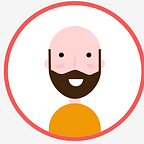Design Thinking: Friend or Fad
Design Thinking: Large companies like IBM and USAA have invested significant sums of money in it. Stanford, Harvard, and MIT teach courses about it. It’s reputed to catalyze innovation, boost team confidence, and help de-risk product launches. So what exactly IS design thinking methodology, and why have so many Fortune 500 companies decided it’s valuable? What can and can’t it do? And is it something we should use (even if we’re not designers)?
This is how Becky and I advertised a workshop on design thinking at Viget here in Boulder, CO. The goal of the workshop was to introduce people from a wide variety of backgrounds to design thinking… in one hour! Here’s how we did it. Feel free to borrow/adapt this one hour intro to design thinking workshop for your own needs.
Agenda: One hour intro to design thinking
Make to Learn — Intro: A key DT mindset is “make to learn”. So we’re gonna do that! First — think about, and describe in writing, a generic tech person living in Boulder <<< insert your city here. Design and describe something (again on paper) that would make their life better. (:00–:05 minutes)
Partner and Prototype: Now, find a partner and ask them about their day yesterday. Then design something with the available prototyping tools that would improve their day in someway. Finally, share your prototype back to your partner and solicit feedback. (:05–:15 minutes)
Idea vs Research: Compare what you designed for a generic person with what you designed for your partner. How do they differ? (:15–:20 minutes)
Real people! This is the main goal of DT. To realize you are not your user, that they have different needs. And that they aren’t a generic “user” but a real human being with a life and emotions and everything. (:20–:22 minutes)
Discussion on principles: What are some other key design principles that we just practiced? (looking to iterate, testing, quick, empathy…) (:22–:30 minutes)
Where could we apply this tool? DT is a great process for tackling complex problems or one where the answer isn’t clear on how to move forward. Crowdsource some work challenges from the audience. (:30–:40 minutes)
Make a plan: Pair up with someone else and create a first pass at a research plan. Define 1) users/stakeholder map, 2) some central questions/design challenge, 3) what you would do first to create empathy or learn more about your users? (:40–:50 minutes + :10 buffer)
If you are interested in bringing this kind of workshop to your team or company, please get in touch through StaircaseStrategy.com
